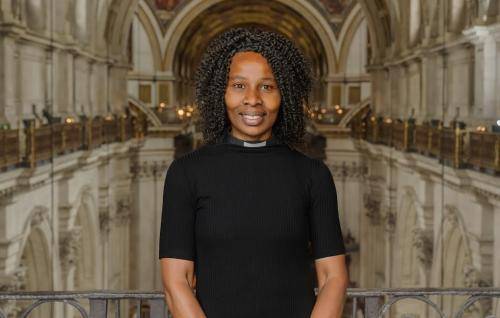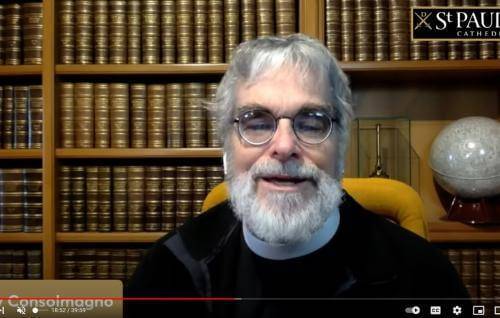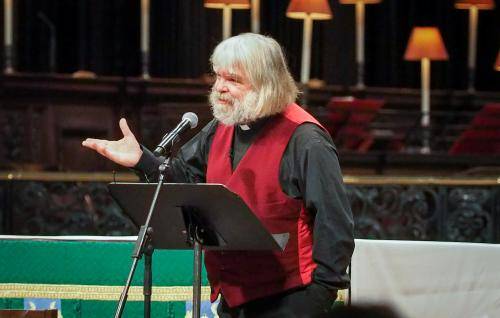Mid-winter traditions
Mid-winter traditions
Peter Graystone rediscovers some forgotten British celebrations.
1. The King of the Bean
The King of the Bean is a tradition that was celebrated in the 17th and 18th centuries on 5th January, the night before Epiphany. While the cook was stirring the batter for the cake which was the prized feature of the Twelfth Night feast, she dropped a bean into it. When it was baked, cut and eaten, whoever found the bean in their slice was declared to be king for the evening, and had to be obeyed when setting jovial tasks. The custom persists in Germany, but not in Britain, although we still occasionally use the phrase ‘bean feast’.
Thus it was that someone lowly and unexpected came to be treated as a king. The resonance with Epiphany would have been evident. Magi glowing with dignity and nobility found themselves kneeling to worship before an unassuming infant in modest circumstances.
Then they opened their treasures and presented him with gifts of gold, frankincense and myrrh. Matthew 2:11
For years I have seen the magi’s gifts as symbolic – gold for a king, frankincense for a religious leader, myrrh for someone whose death would be transformative. Highly likely! But this year I have been wondering whether it’s possible that the wise men just made a huge blunder.
Anticipating greeting the king of the Jews in a palace they had brought presents appropriate for a state occasion. Did they fumble with embarrassment in front of a family who patently had more basic needs, thinking, ‘If only we had brought something more suitable - a loaf of bread perhaps, or a jug of wine’?
2. The Burning of the Clavie
Since pre-Christian times there have been many festivals of light in dark, mid-winter Britain, but only one takes place on 11 January.
In Burghead, on the north-east coast of Scotland, it has taken place on that day since 1752 and is a New Year festival. Why so much later than others? Because in 1752 Scotland replaced the Julian calendar with the Gregorian calendar. What had been 31 December became 11 January. People rioted, believing that their lives had been shortened by 11 days. They burned the clavie that day, as they had for many centuries, but this time in defiance.
They still do. A clavie is half a fisherman’s barrel. It’s filled with staves, set alight, hoisted on a pole, and processed through the town to Doorie Hill. When it burns out and falls down the hill, the glowing embers are collected and sent round the world to urge former residents to come home.
Arise, shine; for your light has come,
and the glory of the Lord has risen upon you.
For darkness shall cover the earth, and thick darkness the peoples;
but the Lord will arise upon you, and his glory will appear over you.
Nations shall come to your light, and kings to the brightness of your dawn.
Isaiah 60:1-3
The book of Isaiah is flooded with light. It’s remarkable that such words of hope were possible, considering the darkness into which the Jews had sunk during exile in Babylon. Salvation was coming to God’s people. But this salvation would also embrace all the other nations of the world. People would be drawn to the God of the Jews not because they were conquered, but because of the radiance of his kingdom.
The vision persists that people will be drawn to God gladly because they have seen his light. They will see the peace with which God’s followers live, and want to share it. They will see the justice with which his followers treat the poor, and want to copy it. They will see that the presence of God transforms lives, and want to experience it.
Darkness is pervasive in the world, but the fire is alight. God’s people are called to parade it defiantly to demonstrate how compelling that light is. Send out the embers. Come home!
3. Wassailing the Orchards
On 17 January during the 16th century the apple orchards of southern England were host to a ceremony of prayer and drinking. Well, to be more accurate, drinking and prayer!
There are a few places where the tradition has survived, notably Carhampton in Somerset. Why 17 January? Because that is Twelfth Night for those who refuse to accept that the Gregorian calendar replaced the Julian calendar in the 18th century.
Wassailing the orchards probably predates Christianity. Of old it involved drinking the health of the trees in the hope that they would be fruitful in the autumn. The wassail drink was warm cider flavoured with spices, crab apples and honey, served in a large bowl passed from person to person. Pieces of toast, soaked in it, were placed in the trees. In Anglo-Saxon English waes hael meant ‘good heath to you’.
During the Christian centuries the prayers for a blessed harvest were redirected to the Christian God, and this is a 19th century wassail prayer from Sussex:
Stand fast, bear well top,
Pray that God send us a howling good crop.
Every twig, apples big;
Every bough, apples now.
There are hidden orchards closer to St Paul’s Cathedral than you might imagine, but even so city-dwellers are less connected to the ground from which their food comes than their predecessors. Mid-January is a crucial time for those who work the land. Time spent praying for the wellbeing of fruit trees and those who tend them is time well spent, whether it is done convivially like the wassailers or privately in front of an electronic device.
Isaiah made an explicit connection between seeking the Lord while he can be found and the fruitfulness of the land which his people farm. He pictures a nation in which all that God plans for his people is accomplished. The result is joy, peace and the Lord’s renown. It is all summed in an appropriately jubilant wassailing image:
All the trees of the field will clap their hands. Isaiah 55:12
4. Burns Night
Celebrated on 25 January, Burns Night perpetuates the memory of Scotland’s best-known poet, born on that day in 1759. By tradition it is marked with haggis (minced sheep’s offal), neeps (swede), tatties (mashed potatoes), and whisky (copious).
It’s a challenge to create a spiritual reflection out of the life of Robert (Rabbie) Burns. On the credit side he wrote sublimely memorable lines: ‘My love is like a red, red rose’ and ‘We’ll take a cup o’ kindness yet for auld lang syne’ (for old times’ sake). On the less commendable side he was a ‘kirk-defying’ rogue who died of the complications of falling asleep in the rain because he was too drunk to get himself home, and the last of whose twelve illegitimate children was born actually during his funeral.
This is the ‘Selkirk Grace’ which is prayed on Burns Night:
Some hae meat and canna eat,
And some wad eat that want it;
But we hae meat and we can eat,
And sae the Lord be thankit.
It is perhaps the perfect prayer of thanksgiving for food. It acknowledges that having great resources is worthless without health to enjoy it. It recognises the poverty in which others are living. It reaches a point of contentment that the circumstances of the present moment are adequate. And it turns those facts into godly gratitude.
The writer of Hebrews believed that such satisfaction is only possible when you find an assurance that God is accompanying you through life:
Keep your lives free from the love of money and be content with what you have, because God has said, ‘Never will I leave you; never will I forsake you.’ Hebrews 13:5
Burns’ life was restless and it’s hard to imagine that he achieved that contentment. He wrote to his lawyer Robert Aikin that he was restrained from going abroad solely by knowledge of the children he had brought into the world and lost touch with. The letter ends with a doleful realisation that he would never change. But before that he has a momentary insight into what might have been:
‘O thou great, unknown Power! Thou Almighty God, who hast lighted up reason in my breast and blessed me with immortality! I have frequently wandered from that order and regularity necessary for the perfection of thy works, yet thou hast never left me nor forsaken me.’








